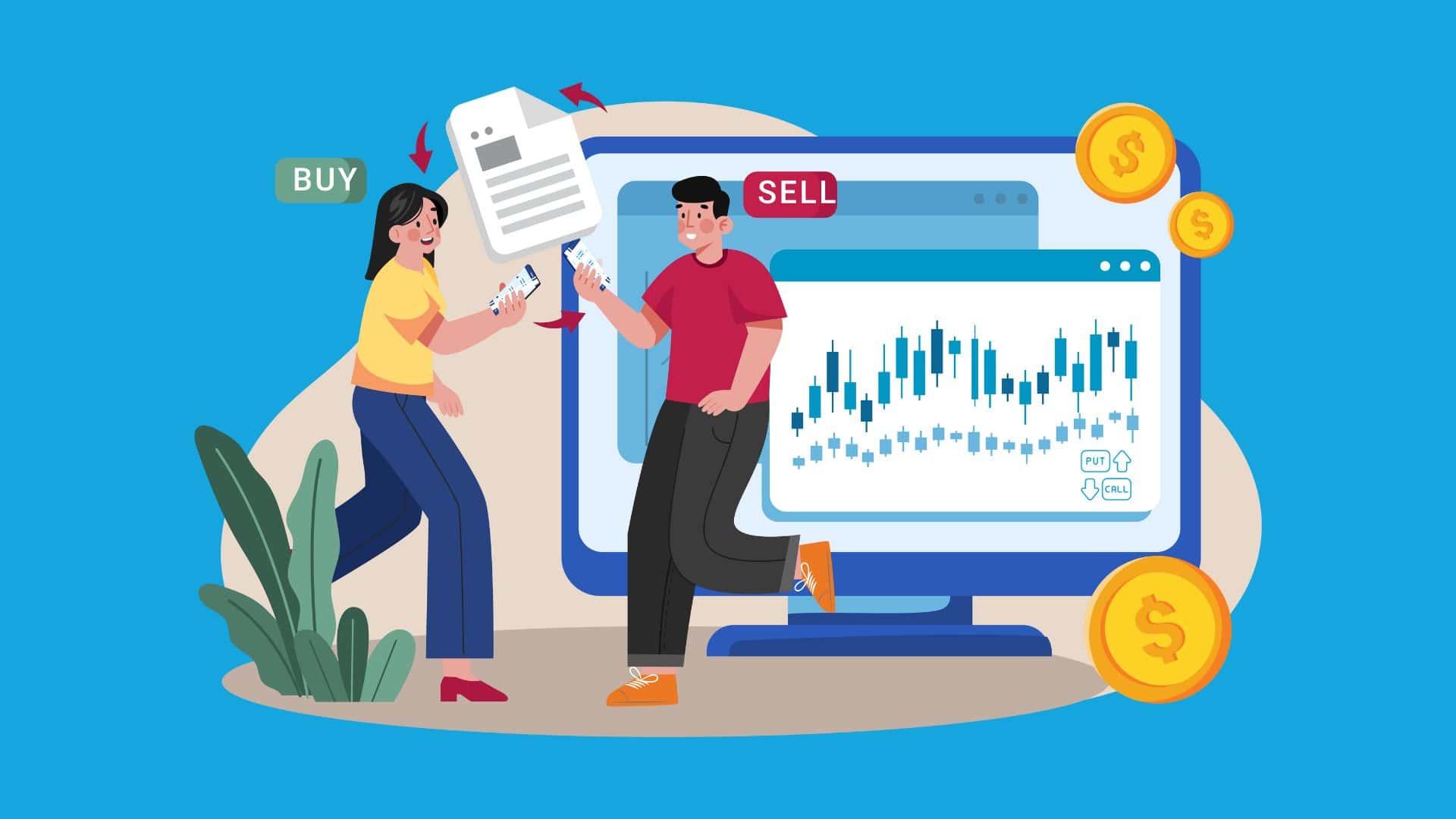
We discuss cash dividends paid on common stock investments and related dates. Additionally, we analyze a practice question that could be similar to an actual test question on this topic. This is one of many videos available on the Achievable platform – links to our learning program are above!
If you’re looking for a comprehensive course to pass your FINRA or NASAA exam the first time, try Achievable’s FINRA and NASAA courses. We offer courses with industry leading pass rates for the FINRA SIE, Series 6, Series 7, Series 63, Series 65, and Series 66 exams. Try a Series 7 sample question to get a sense for our materials.
00:00:00 Let's talk a little bit about dividends. This is the fun part about owning stock. I buy some shares of stock. I just sit around. I don't really do much after I buy it. It just pays me some money. Now, as you've learned in the achievable materials, most common stocks don't pay dividends. There are a ton of growth companies out there, smaller companies trying to grow into something bigger, those companies. 00:00:21 Generally speaking, don't share their profits with their investors and that's what a dividend is. We made a profit on something. Here's some of those profits. Here you go, We don't need them. The companies that are most likely to pay dividends are your larger, well established companies that are generally speaking beyond their significant growth phase. Here's the thing, every company tries to grow no matter how big they are. But if we think about like McDonald's, McDonald's is a global business. In particular, the business exploded back in this 19. 00:00:51 Sixties 1970s. Now, is McDonald's going to grow in the future into a, let's say, 56710 times bigger company than they already are? They might, but it's your smaller companies, your startups, your small growth companies that are more likely to see more growth. 00:01:08 So the point is what type of a company pays dividends? Large, well established. Oftentimes these are what we call value companies that maybe aren't growing as much in stock price anymore. So maybe their stock price is a little undervalued, but the big value you get out of these investments are dividends. Now let's make sure that we understand the big things we need to know about dividends first. Investors have the right to receive a dividend but have no right to vote on them. That should probably make sense if you think about it for a second. Hey, if I'm a shareholder of a company and I can. 00:01:38 If dividends are paid, yeah, I'm going to vote for $1000 per share dividend pay it to me tomorrow. Shareholders will probably bankrupt the company. Shareholders are not typically super longterm minded. That is why we have the Board of Directors declare in approved dividends paid to shareholders. Can't trust us, Weasley shareholders, we're going to bankrupt the company. Let's talk about those dividend dates. DERP is such a good acronym. A lot of times I think about my cat, my cat is pretty derpy. I don't even know what that means. It's just the word makes sense when I say. 00:02:08 Derp refers to the four dividend dates that are important for us to know, and it happens to go in that order. Now D, the declaration date, this one's simple. When a corporation's board of directors approves a dividend, eventually they need to tell the public that they did. So like, hey, shareholders, we approved a dividend, we're going to pay you. The declaration date is the day they publicly declare, hey guys, you're getting a dividend. That's all it is. Just a public announcement now. I'm going to skip over E for right now. It'll make sense here in a second. 00:02:38 Let's go to R The record day is the day a shareholder must be a settled owner of the stock to receive the dividend. As you've learned in the achievable materials, we have a book of shareholders which is primarily managed by the transfer agent. When people buy shares of stock, the transfer agent adds them to the stockholder list. When people sell shares of stock, they are removed from the stockholder list. And that's done on a perpetual basis because people trade stock every day and that is a revolving door sometimes. 00:03:08 The more actively traded the stock, the more the revolving door exists. But the point is, if I want the dividend, I have to be settled by the record day in order to get the dividend. That is what the record date is got to be settled by that day to get it. Now it's something to keep in mind regular waste settlement, which is the way that like 99% of trades are done. Regular waste settlement for common stock is T + 2. So what that means is that we have to buy the stock. 00:03:38 In time to have two business days after the trade so that we can settle in time. So for example if the record day is say on Wednesday, we would have to buy the stock by Monday to get it. Monday would be the trade date. 00:03:50 Tuesday would be the first settlement day. Wednesday would be the second settlement day. If the record day is on Wednesday, we gotta buy the stock by Monday to get that dividend. Now that brings us back to the EX date or the X dividend date. Think about that word X. We usually see that word with relationships, right? 00:04:09 Ex-girlfriend, ex-boyfriend, ex-wife, exhusband, ex partner. The word ex means without you are without that person. For referring to a relationship with a dividend, if we say the ex dividend day, it is the without the dividend day. So what does that represent? The ex dividend date is the first date that if the stock is purchased. 00:04:31 The investor that's purchasing that stock, it's not getting the dividend. So back to our example, if the record day is on Wednesday, in the last day, we can buy the stock and still get the dividend is on Monday, then Tuesday is our X date. An investor buying the stock on Tuesday would not settle until Thursday of the same week. That's one day after when they need to be a settled owner to get the stock. The record day is Wednesday. Got to settle by that day, Tuesday's too late. So there's two ways to think about the X date 1. 00:04:59 It is the first date that an investor buying the stock will not get the upcoming dividend. If I buy the stock on Tuesday, I'm not settling by Wednesday, I'm not getting the dividend. But secondly, it is the first date that an owner of the stock, so someone that currently owns the shares, it's the first date that they can sell the stock and keep the dividend. So let's use the same dates but flip the scenario. Let's say you own this stock, there's a dividend that's just been declared. The record day is on Wednesday. You want to sell the stock. 00:05:29 For whatever reason, but still want to get the dividend, When is the first date? You can do that. That'd be the X date. If you sell the stock on Tuesday, you're selling it on the without the dividend day. When you sell the stock, you are not removed from the stockholder list until Thursday. Those are the two ways you want to think about the X date and will reinforce that idea as we look at a practice question later. The last letter of our acronym is P, which stands for the payable date. The payable date is the day that the dividend is made and paid to investors. It's the day you open. 00:05:59 Up your account like, oh, OK, there's a dividend. Oftentimes the payable date is weeks or sometimes even months after the record and X date, but that's OK, you're eventually gonna get the dividend. The only thing that might be worthy of knowing for the exam with the payable date is something that relates to taxes. Let's say an issue where declares A dividend at the end of a year. The record day is at the end of the year. The X date is at the end of the year, but the payable date is the following year, like in January of the following year. Question might be, hey, here are all these dates. When is the dividend actually? 00:06:29 Reported for tax purposes. It is reported when it is received. So the payable date's an important date for tax purposes. Who cares about the declaration date, the record date, the X date? We don't care about that stuff. It's all about the payable date when it comes to tax reporting. Now back to the acronym again, DIRP. It's in this order on purpose DERP because this is the timeline. 00:06:50 Declaration dates first, X dates next record date is the day after the X date. Or maybe another way of saying the X date falls always one business day before the record date and then the payable dates last. OK, if you're feeling good about this concept, let's look at a practice question together to really see if we can implement the things we just learned. If you want to take a moment and see if you can answer the question on your own, hit pause. And as soon as you hit play, we will break the question down together. All right, you think you know the answer. 00:07:18 Let's see, a publicly traded company announces the following in a press release on Tuesday July 9th, 2022. Poet experts company, pretty cool company name. They announced A quarterly cash dividend of $2.25 per share of common stock. The dividend will be payable on Thursday, September 2nd, 2022 to shareholders of record as of Friday, August 18th, 2022. What statement is false? A lot of stuff to look at here and we need to be cognizant also of what the questions. 00:07:48 Actually asking whenever you get these looking for the negative, looking for the false, be clear that you're looking for this. And we need to know we have 3 truths in a lie in front of us. Looking for the lie. Now going back up to the question, this is actually exactly what a dividend announcement sounds like when it's published on the declaration date. Let's go ahead and just breakdown some of the things they've given us in this announcement. On Tuesday, July 9th, 2022, the company announces Tuesday, July 9th, 2022. That's the declaration date that might help us in the. 00:08:18 Answers, haven't even looked at the answers yet. We'll look at that, but let's maybe account for what we're looking for so far. So that's our declaration date. The dividend will be payable on Thursday, September 2nd, 2022. Let's pause there. That is our payable date literally has the word right next to it. So payable dates September 2nd to shareholders of record as of Friday, August 18, 2022, August 18th, that is our record day. We've been given three dates in this announcement. These are the dates that the Board of Directors, this is what they control, They however have. 00:08:48 No control over the X date and that's why you never find them in these announcements. The X date is always based upon settlement and issuers of stock don't determine how long it takes their stock to settle. That's a job for the regulators, typically either FINRA or the New York Stock Exchange. It's one of the two of those depending on the stock. So they don't announce the X date. So we kind of have to figure that out. In fact, I'm looking at some of the answers here, the X date's mentioned. So we'll have to know what that is. Let's list out what we have. You've got our declaration date or record date or payable date and before. 00:09:18 Or even get to the answers, we can determine what the X date is. The X date is always one business day prior to the record day. So that would be Thursday, August 17th, 2022. That is our X date. At this point we've done enough to lead up to the answers. So let's go through the answers and see if we can get to the right answer, which again is the false statement. First one, the last day an investor could buy the stock by regular waste settlement and receive the dividend. 00:09:46 Is Thursday, August 17th? Now let's think about that. We know the X date is Thursday, August 17th. In the X date is the without the dividend day. If we buy on Thursday, August 17th, we have to think about when are we settling. Well, Thursday would be the trade day, Friday would be business day number one. We don't count the weekend for settlement. Monday would be the settlement day. So we would not settle by the record day and therefore would not get the dividend. So we could think about that in our head or we just feel really confident about what the X date is. The X date is the. 00:10:16 The first day that if the stock is purchased, the dividend will not be received by the investor buying that stock. That has to be our false statement. The first one, if we wanted to correct this answer, the last day to buy the stock regular way would actually be Wednesday, August 16th, buy the stock on Wednesday, that'd be our trade date. One business day would be Thursday, 2, business days would be Friday. We'd settle in time on Friday and get the dividend. So Wednesday would be the last day we could buy the stock and get the dividend. 00:10:42 Thursday is not now. I always recommend if the first answer you come across is the thing you think is the right answer, you got to go through the other three just to make sure. Maybe your math is off, Maybe the way you're looking at it is wrong. Maybe there's a better answer, who knows. Let's go to the second answer choice the first day an investor could sell the stock by regular way. Settlement and keep the dividend is Thursday, August 17th. Sounds really familiar to the first answer, but we're looking at it from the other perspective. Vester owns a stock, they're selling it. 00:11:12 But they want to keep the dividend. The first state that they could do that would be the X date. If they were to sell the stock on Thursday, we got to think about when that trade would settle. The settlement day would be the day they're taken off the stockholder list. They sell on Thursday, That's the trade date. One business day would be Friday, 2 business days would be Monday. They're not being taken off the book until Monday. On Friday, when the transfer agent looks at the stockholder list, they're still there. They're getting the dividend. 00:11:38 That is a true statement. OK, let's go to the third statement. The Board of Directors sets the declaration date, record date and payable date. We talked about that upfront. The only date that they don't set is the X dividend date because that is the power of the regulators. That is all focused on settlement, which the Board of Directors has no control over. That is also a true statement. And the last answer, Thursday, August 17th, it's just the focus of this question here. Is that the X date? Yeah, that's the X date. That is the first day that if a person that purchases the stock, they will not get. 00:12:08 The dividend, but that is also the day that a person that owns a stock and sells a stock will keep the dividend if they sell on the X dividend day or after all right. Hopefully that helps a bit with your understanding of dividend dates. I know this can sometimes be confusing, but you really want to be strong on your settlement time frames. Be aware of what each date, in particular the record date and what the X date, what those mean and you will consistently get these questions right on the exam.

We teach you how to use hedging strategies in your options trading to limit your risk. This is both useful for retail traders and a key options topic tested on FINRA and NASAA exams.

We teach you how to use hedging strategies in your options trading to limit your risk. This is both useful for retail traders and a key options topic tested on FINRA and NASAA exams.

Unsexy but mighty, bonds represented $39T in net value WW in 2015, while stocks were worth approximately $26T. Basic Wisdom’s Brandon Rith walks you through how they’re handled in the wealth management profession.